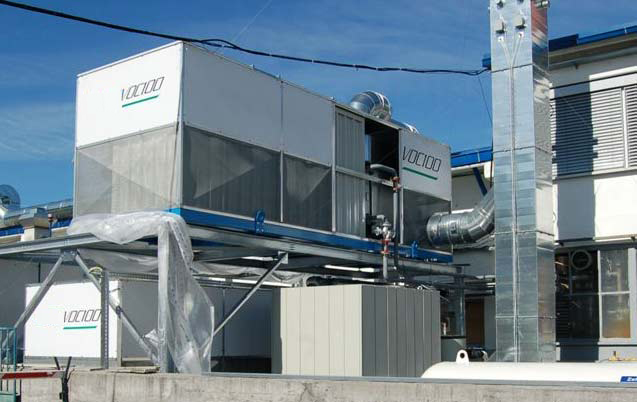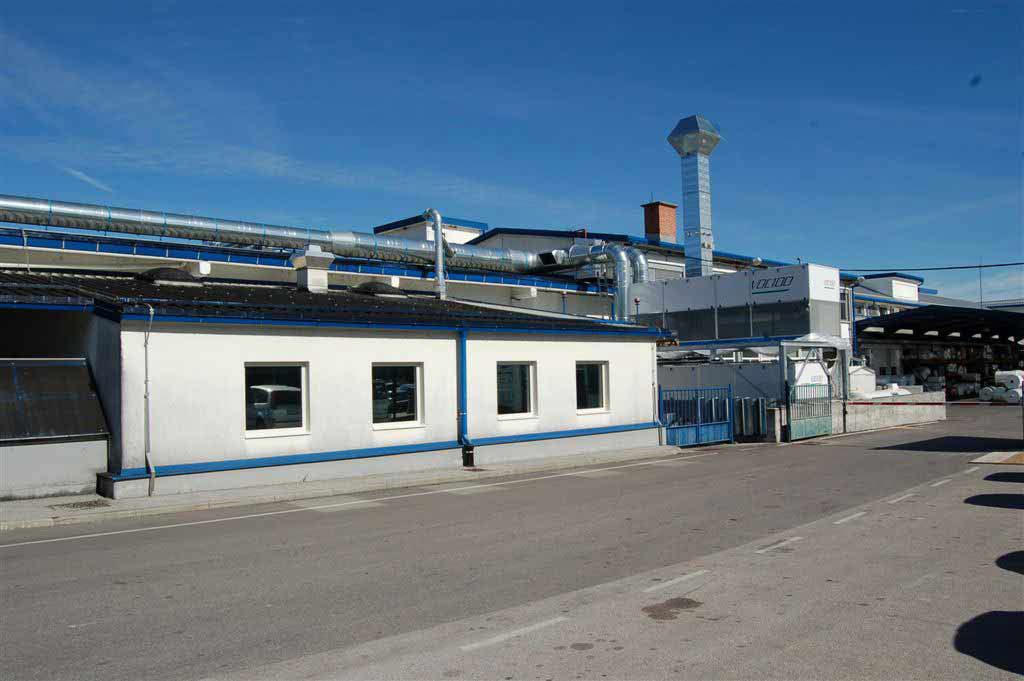The range of handling volumes is from 500 Nm³/h up to 10000-15000 Nm³/h.
The combination of these systems can easily handle flows up to 100,000 Nm ³ / h and beyond.
Advantages of our Catalytic Oxidator
The conventional technology for the treatment of VOC at low concentrations is generally oriented to heating burners, where the VOC are treated for about 1-1.5 seconds at a temperature above 780°C, using gas for heating. This method involves a very large consumption of energy, not allowing adequate monitoring of operating costs, despite the heat recovery.
Using the system EZVOC, you can reach exceptional levels of auto-thermal process, allowing to treat the airflow without additional energy consumption.
Taking advantage of the heat thus created by the system, we can maintain the temperature required to operate the plant, thus avoiding the traditional operating cost and reducing the need of energy to the start-up only.
The manufactory employs highly specific catalysts for the oxidation of VOC. The temperature required for reaction is lower than that of conventional heating burners. The duration of treatment of polluted air is considerably lower than burners, and this explains the huge differences in needs between the two systems.
The system EZVOC takes up to 1/3 of the energy needed to a heating burner, which translates into reduced energy consumption and reduced thermal and mechanical stress due to high temperatures.
This advantage greatly increases the life of the plant and drastically reduces operating and maintenance costs.
Operating costs are very reduced, including through the use of a heat exchanger specifically included within the process.
The design of the structure also allows a very important reduction in installation space.
All systems EZVOC are fully automated. They adapt instantly to changes in flow and concentrations to be treated; all operations of monitoring of the installation can be carried out remotely by GSM. The remote control modules allow you to monitor temperatures, state, and many other data.
All operations can be monitored (not changed or adjusted by GSM).
The necessary controls and alarms are reported by GSM, enabling customers to concentrate on its production process, rather than the treatment system for VOC.
Unlike other methods of abatement, the EZVOC can reduce and simplify many all controls for gas leaks, firefighting, fire inspections and other aspects necessary for the proper functioning of a traditional plant.
Special filter
The EZVOC DIRECT has a filter that protects the system from harmful powders.
Installation and dimensions
The system EZVOC DIRECT has been designed to be mounted outside, usually in a metal structure, and to give easy access to all components of the machine in case of need.
The installation is very fast, because the plant was designed pre-assembled. In two days, provided that everything you need is available, the system is booted and is operating at 100%.
The EZVOC DIRECT occupies on average no more than 15 m2 for its installation.
Main technical aspects of the system EZVOC
- high performance conversion
- autothermal process possible at unbelievable low concentration
- operating costs extremely low
- minimal maintenance required
- 5-year warranty on the catalysts
- BAT (= best available technology)
- no production of CO, NOx
- installation longevity very high
- self-adaptability of the system to changes in flow and concentrations
- functions monitorable by GSM (option)
- no foundation or structure necessary
- extreme ease of installation and commissioning
- low noise level of the plant, under 75 dB
- Exothermic reaction delivers energy used to lower production costs
- Possibility to use this energy to produce cold process water (7 – 11 °C)
Description of system operation
The basic principle is the oxidation of the solvents included in the airflow, through high-performance catalysts, which enable a rapid exothermic reaction.
Given the high efficiency of conversion request, the oxidation process occurs in several stages.

